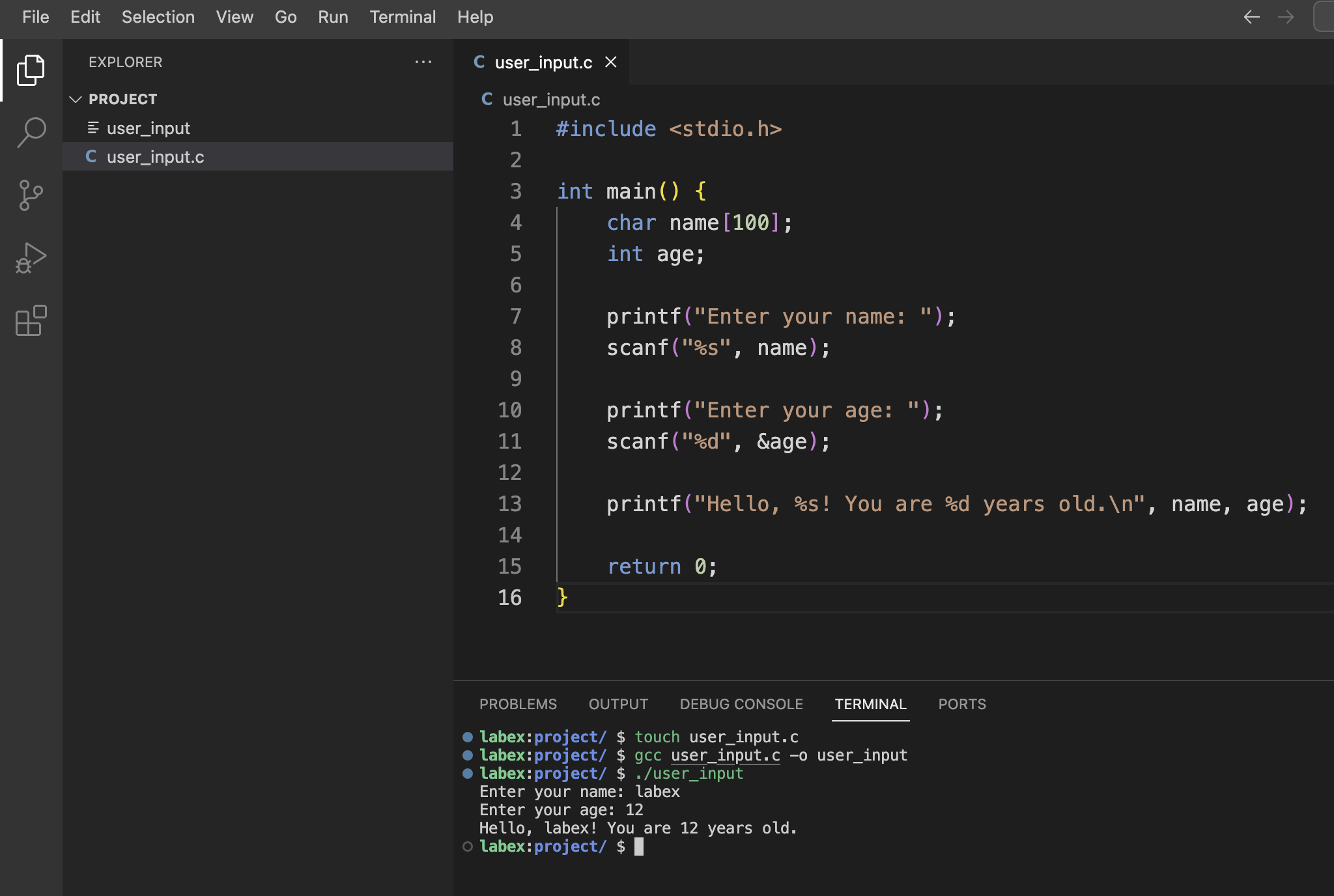Introduction
In this lab, you will learn how to read user input in the C programming language using the scanf() function. The scanf() function is a powerful tool for reading input from users and is defined in the standard input/output library stdio.h. C is a strongly typed language that supports various data types. Throughout this lab, we will focus on using the char and int data types to read and display user input.





